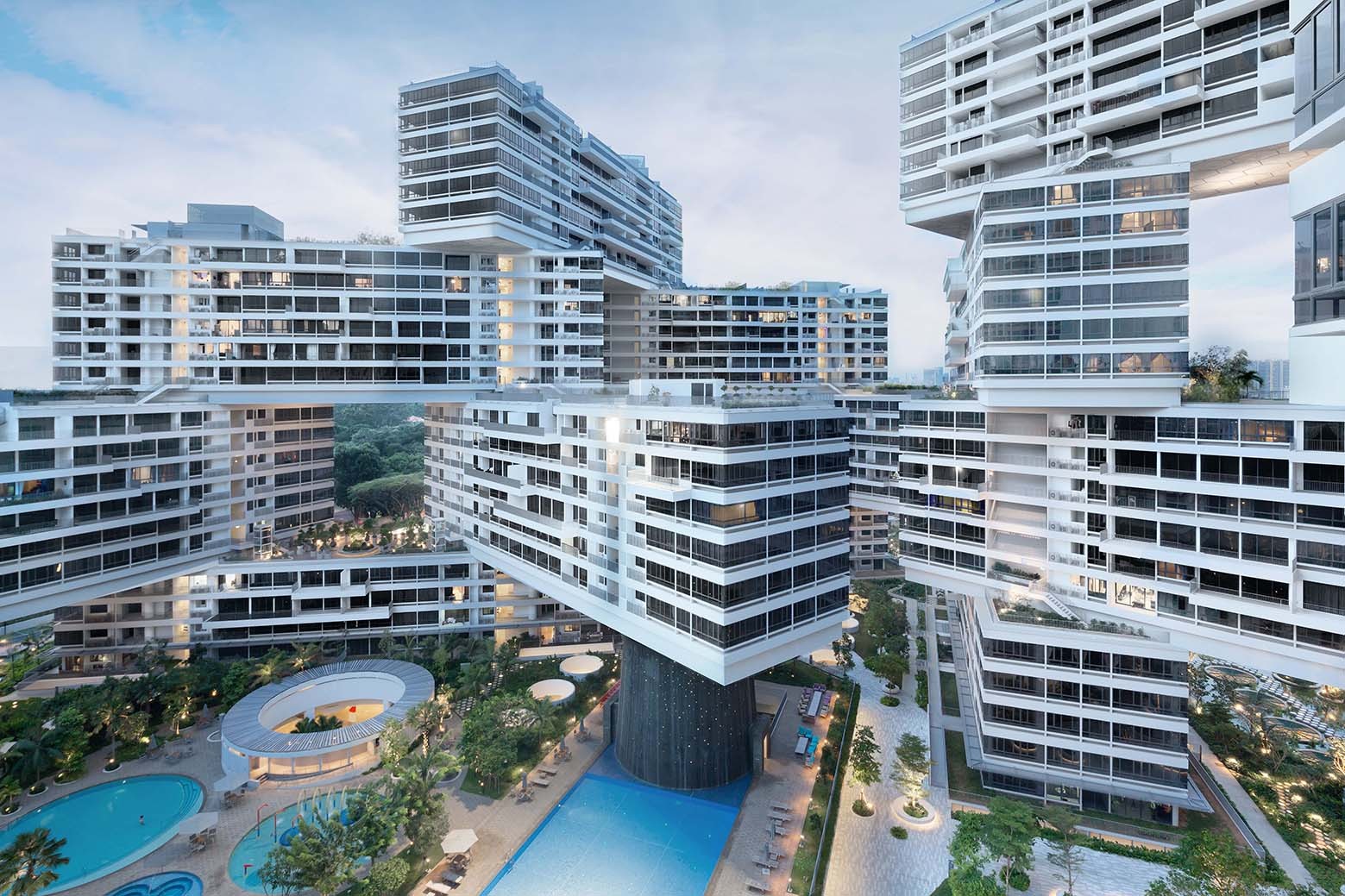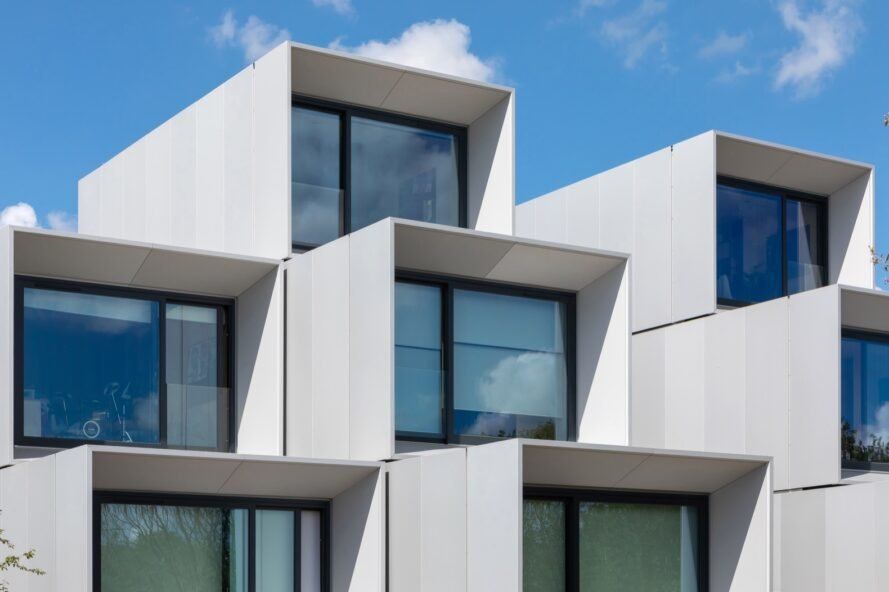Modular architecture or “modularity in design” is a design approach that subdivides a system into smaller parts called modules or skids that can be independently created and then used in different systems. A modular system is characterized by functional partitioning into discrete scalable and reusable modules, rigorous use of well-defined modular interfaces, and making use of industry standards for interfaces.
The benefits of modular design are flexible in design and reduction in costs. Examples of modular systems are modular buildings, solar panels, wind turbines, and so on. The modular design combines the advantages of standardization with those of customization. A downside to modularity is that low-quality modular systems are not optimized for performance.

The Interlace, OMA, Ole Scheeren, © Iwan Baan
The Origin of Modular Design
Historically, in classical architecture, the diameter of a column was used as the basis for a number of modules. In Japanese architecture, room sizes were determined by combinations of rice mats which were 90x180cm. Matila Ghyka’s work on the golden section was one of the sources of the Modular, but his work, in general, was used by other architects, such as Le Corbusier’s rival Andre Lurcat.
Lurcat proposed his own range of proportions related to the work of builders as much as to that of designers. Proportions and modules – thus became a central issue in the postwar French reconstruction, as architects struggled to maintain their status amid changing procedures in building production (Cohen, 2014).
What is the difference between modular and integral architecture?
There are many ways of categorizing architecture. Architecture can be either modular or integral. In reality, fully modular or fully integral architecture is rare and almost all architecture is somewhere in between.
On one hand, modular architecture has functionally de-coupled interfaces between components. In practice, this often leads to architecture that is one, where the functional elements in the building are mapped one-to-one to the components of the design.
However, integral architecture is the opposite of modular architecture. Integral architecture has coupled interfaces between components. It tends to have a more complex (not one-to-one) mapping from functional elements in the function structure to the components of the design (Holtta, 2005).
The Challenge of Modularity
Modularity means using the same module in multiple configurations enabling a large variety of designs without using any component types. This modularity brings several advantages such as reduced capital requirements and economies. Modularity is especially advantageous when the scale and scope of the project are relatively large. In such cases, it is a practical and economic option.
Through modularity, you can achieve various designs, while achieving low-cost development, as well as, cost-saving in design and construction. Thus, you find that modularity is pushing out the productivity frontier in design creation (McCluskey, 2000). On the contrary, modularity may lead to excess cost due to over-design, inefficient performance, and too many common modules may result in loss of design identity.
What is modular product architecture?
1. Charles De Gaulle International Airport – Terminal 2E (Paris –France)
The most recent, though surely not the final, extension of the Charles de Gaulle airport in Paris is Terminal 2E, completed in 2003. With a theoretical capacity of 11 million passengers per year and an area of 230,000 square meters, 2E is larger but less complex than the airline terminal 2F. 2E is an outgrowth of Andreu’s work on 2F. The architect has insisted on developing and changing the design, rather than permitting a sterile reproduction of earlier designs (Jodidio, 2004).
Owing to its modular design, Terminal 2E was designed to address constant traffic conditions. The road infrastructure is part of the site’s entire composition as roads and viaducts come together and converge at the center of the terminal, flanked by two modules on each side. All these modules, located at the heart of the aircraft apron area, form four narrow 60 meter-wide buildings where travelers can see aircraft from the road. Each module is covered with trapezoidal shells forming four radiating arcs when seen from the sky.
Modular Design Approach
It is significant to use the modular approach in architectural designs. Modular design is characterized by properties such as upgradability, serviceability, flexibility, and so on. Also, the beauty of modular architecture is that you can replace or add any module without affecting the rest of the system. But, how important is it to encourage designers to use modularity? The answer is in the way we use modularity and the objectives of modular systems. Think of all the infinite numbers of architectural designs and forms we can create with a simple set of modules.
Written by: Riham Nady
Edited by: Aiysha Alsane
References
- Cohen, Jean-Louis. (2014). “Le Corbusier’s Modulor and the Debate on Proportion in France”. Architectural Histories, 2(1):23, pp.1-14.
- Holtta-Otto, Katja. (2005). “Modular Product Platform Design”. Doctoral Dissertation, Helsinki University of Technology. Finland.
- Jodidio, Philip. (2004). “Paul Andreu Architect”. BIRKHAUSER-Publishers for Architecture, Basal. Switzerland.
- McCluskey, Alan. (2000). “Modularity: upgrading to the next generation design architecture”. Business and Media official website: http://www.connected.org/media/modular.html.







